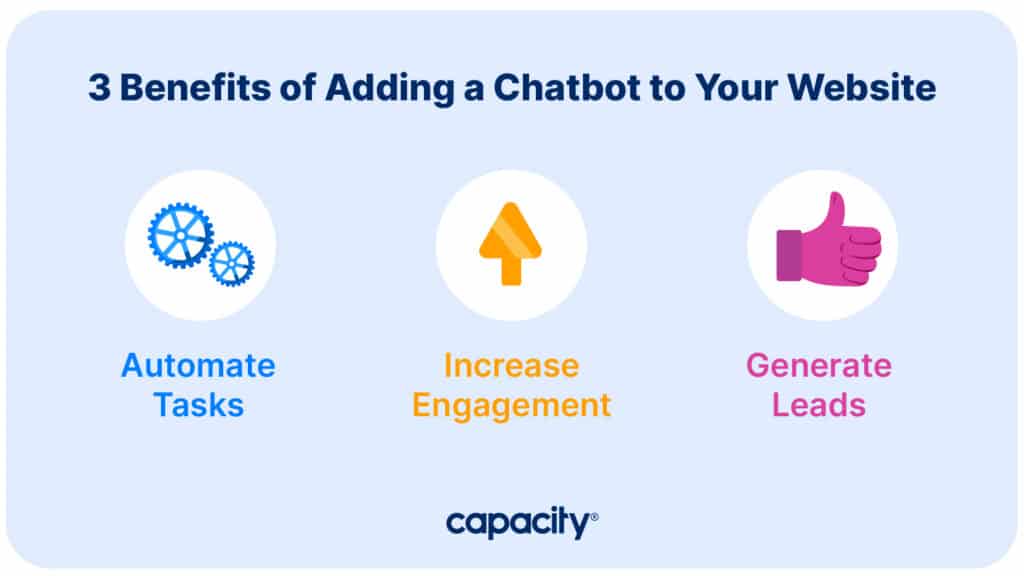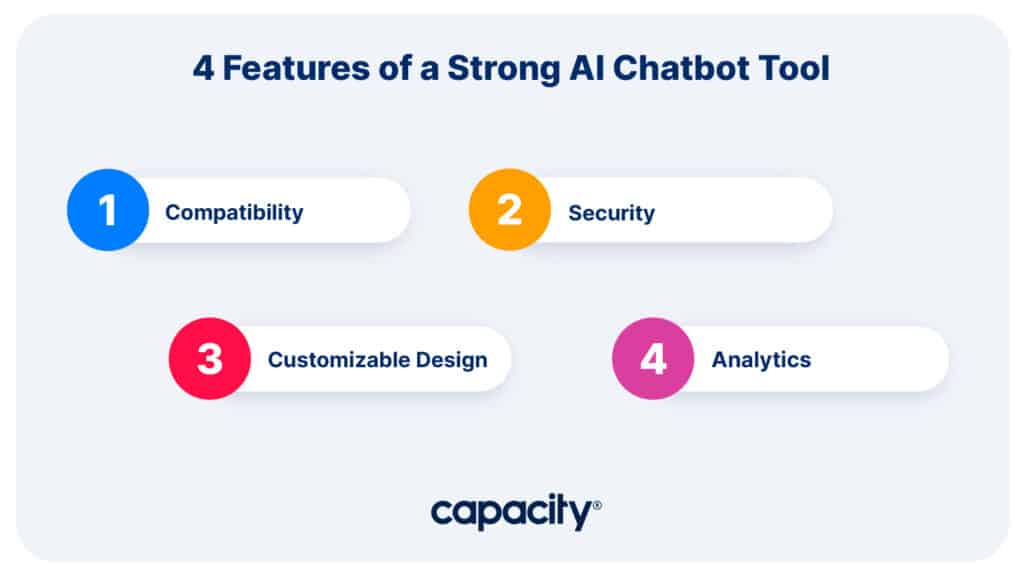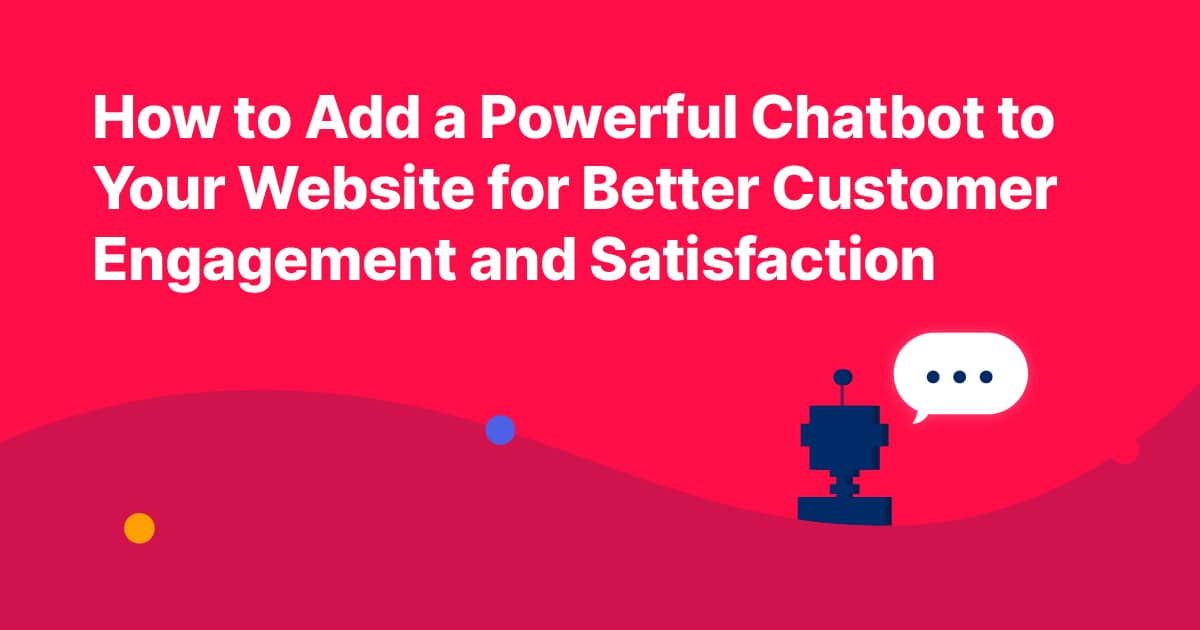Imagine this: AI chatbots are taking over customer service. No, this isn’t the start of a dystopian sci-fi movie — it’s true! But in all the best ways. Artificial intelligence is a hot-button issue this year as it finds its way into every business sector. But the reality is that AI, when used well, can drive better customer experience, improve customer engagement, and give you better insight across your operations.
Now, chatbots aren’t necessarily a new thing in customer service. We’re all accustomed to the bot forms that pop up in live chat conversations. They often feel stale, impersonal, and unhelpful. And if you’re like me, you click and type whatever you have to to get a live agent ASAP.
But with AI, you can reclaim your chatbot to actually make it useful for your CX and contact center team. Currently, 26% of companies offer AI and chatbot-guided self-service, and 25% plan to add it soon. It’s time to hop on board with the AI movement and add an artificially intelligent chatbot to your website. Here’s why.
Benefits of adding a chatbot to your website:
Chatbots have a lot of versatility and benefits. Honestly, the use cases are vast enough that we just don’t have time to go into them all. But here are a few high-level ways that adding a chatbot to your site can improve customer satisfaction, boost issue resolutions, and cut wasted time.

1. Automate customer service inquiries, freeing up time for more important tasks.
SMS and live chat are becoming the most preferred channels for customer support. They’re flexible, typically faster, and, let’s be real, give the customer the freedom to not make a dreaded phone call. With chats, customers can send images and detailed information in a more personalized format and with a faster response time than it takes to get an email back.
AI chatbots can step into these channels easily, acting as intelligent virtual assistants who can answer simple questions using information from your knowledge base. Drive better self-service through your chatbot so your agents can focus on the more complicated customer inquiries and problems.
2. Generate leads and collect real-time data from visitors for better insights into customer needs and preferences.
AI chatbots can gather valuable data from your customer base and generate leads without using extra resources on your team. Add a chatbot to your website to create a useful touchpoint with visitors, driving lead generation. Or, use a chatbot to get a sense of frequent customer issues by tracking conversation trends. Add data collection forms to your bot flow, giving prospects an easy way to request a demo or to ask for sales assistance.

Automate Your Work
Capacity’s enterprise AI chatbot can help:
- Answer FAQs anytime, anywhere
- Find relevant documents within seconds
- Give surveys and collect feedback
3. Increase engagement for better conversion and customer retention.
It’s one thing to get customers to your website, but it’s a whole new ballgame to try and encourage them to stick around and buy your product. After getting that necessary click and bringing a prospect or customer to your site, chatbots are a useful tool to keep them there. AI chatbots can help support your conversion strategy, driving better engagement with your brand and product. Encourage customers to interact with the chatbot through pop-ups. Then, within the bot flow, you can add support resources, product demos for new features, or give customers downloadable content to improve their overall brand experience.
Choosing the right AI chatbot tool
Ok, hopefully I’ve given you a little encouragement to start looking for an AI chatbot for your website. Before committing to a tool, you’ll want to consider the following checklist to make sure you’re choosing the right tool.

Look for a tool that has the following:
Compatibility
It’s important to pick a chatbot tool that’s compatible with your website’s platform and system requirements. The right tool should integrate seamlessly into your existing site architecture and be able to work in tandem with other programs and applications.
Security
Ensure that the chatbot provider you select offers strong security measures, such as encryption, to protect user data from hackers and other malicious activities.
Customizable design
Choose a chatbot tool that can be tailored to the feel and look of your website. The right design should match the overall aesthetics of your site. It should also capture user attention and promote engagement.
Analytics
Look for a tool that offers analytics so you can measure and track your chatbot’s performance. With reporting, identify areas where you can improve and enhance the customer experience.
How to add a chatbot to your website using Capacity:
Maybe we’re a bit biased, but it’s worth noting that Capacity offers a pretty stellar AI-powered chatbot that can be easily added to your website. With Capacity’s Concierge, you can create and manage up to 100 website chatbots that can live on any web page. Here are the steps on how to add a chatbot to your website using Capacity:
- Create your Concierge chatbot in the Capacity settings.
- Assign your Concierge an internal name.
- Add the Javascript to the web page you’d like the Concierge to appear.
- Then, customize the chatbot’s external name, logo, color, and location on the page to fit your brand.
With a few clicks, you have your own virtual assistant, ready and able to tackle customer service requests and drive better work. Try Capacity (for free) today to see how it works.





